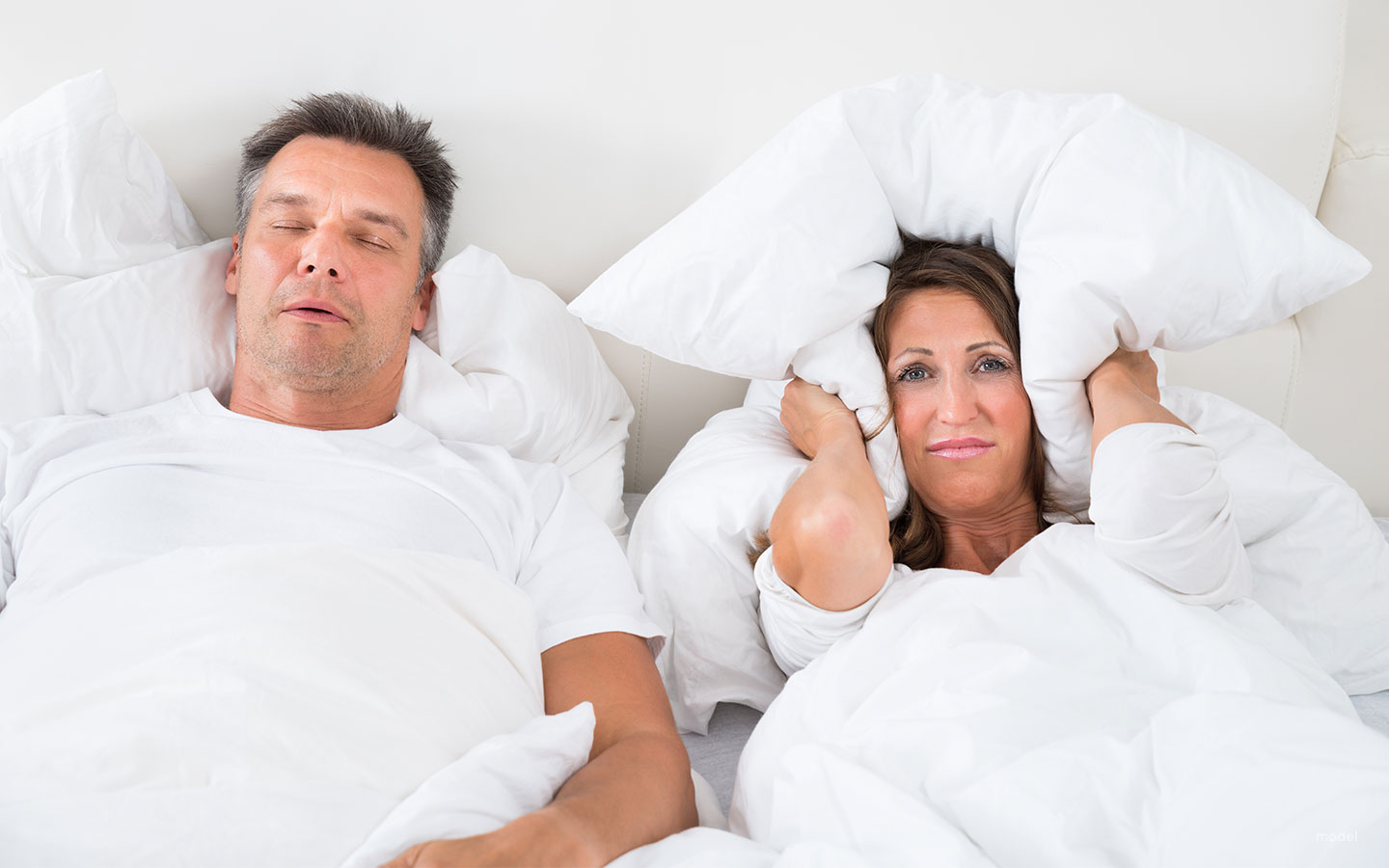

Do you wake up tired after a night, which should guarantee regenerative sleep, do you have a headache, chapped lips, and others complain about your snoring? Be careful, because these symptoms may indicate sleep apnea - a serious condition that is often underestimated not only by the patients themselves, but also by the doctors they visit.
What is sleep apnea?
Sleep apnea has been diagnosed as "a disease characterized by multiple, repeated episodes of stopping or severely restricting airflow through the airways at the pharyngeal level with increased work of the respiratory muscles."
There are basically 3 types of sleep apnea:
- obstructive sleep apnea - associated with blocking air flow by flaccid muscles of the throat or tongue while maintaining the work of the chest,
- central sleep apnea - associated with the stoppage of airflow along with the lack of chest movement while breathing; results from disturbances in the work of brain structures responsible for maintaining the proper functioning of the respiratory system,
- mixed sleep apnea - results from both of the above-mentioned reasons simultaneously.
Symptoms
Symptoms can be divided into two types again, i.e. those that we struggle with at night and those that accompany us during the day.
Night symptoms:
• loud snoring,
• frequent awakening during the night,
• rapid breathing after waking up,
• excessive sweating.
Daytime symptoms:
• morning headaches,
• fatigue,
• sleepiness,
• problems with concentration.
Treatment methods
There are generally three main treatments for sleep apnea:
- surgical treatment - surgical treatment is a method reserved for people with a mild or moderate disease, without being overweight or having heart and vascular diseases. For other people, it may be recommended in case of inability to use a CPAP air prosthesis (e.g. non-acceptance of CPAP, claustrophobia). The procedure is performed under general anesthesia and consists in straightening the curved septum of the nose, removing polyps, removing enlarged palatine and pharyngeal tonsils, cutting out the uvula and plasticizing the soft palate. Sometimes the tongue is also reduced. The scope of the procedure performed depends on the individual needs of the patient. Unfortunately, surgical treatment does not guarantee success. According to some sources, its effectiveness is only 50% and the symptoms of the disease may recur. Surgical treatment can be used as a standalone treatment or in combination with CPAP;
- using the CPAP air prosthesis (BiPAP) - The CPAP air prosthesis is a device that during sleep, through the nose or through the mouth and nose, forces air into the lungs under increased pressure. As a result, the pressure inside the patient's throat is greater than outside the body, preventing the throat from collapsing and causing apnea. CPAP is the most effective method of treatment, recommended in all forms of the disease, even the most severe. CPAP requires systematic use and all symptoms of the disease return after its discontinuation. A type of CPAP air prosthesis is Auto CPAP. A normal CPAP prosthesis uses one pressure set by your doctor overnight. Auto type prosthesis recognizes what pressure is needed at a given moment and changes it to adapt to the situation. As a result, her average pressures are much lower and her sleeping comfort is much greater. CPAP and AutoCPAP air prostheses enable checking whether they will be effective and well tolerated by patients before their use (purchase). Auto CPAP prostheses also offer the possibility of treatment control;
- the use of a special dental apparatus - a dental apparatus is a special dental prosthesis placed in the mouth for the night. The essence of its operation is to move the lower jaw forward and thus move the tongue away from the back wall of the throat. Thanks to this, there is more free space in the throat and the chance of it collapsing and causing apnea or snoring is reduced. This method is intended for people with mild to moderate obstructive sleep apnea.
Additionally, and in principle above all, it is necessary to normalize body weight in overweight people. Weight normalization is a procedure aimed at the cause of apnea. Losing weight by even a few kilograms can already have a noticeable effect. Complete resolution of apnea by bringing the weight to normal is only possible when overweight is the only cause of the disease.
We invite you to familiarize yourself with the range of auto CPAP devices offered by us from the renowned Yuwell brand. Buying a CPAP device is very often an investment for years, so it is worth choosing the equipment of an experienced manufacturer. CPAP devices for insured patients are partially reimbursed by the National Health Funds in most countries.